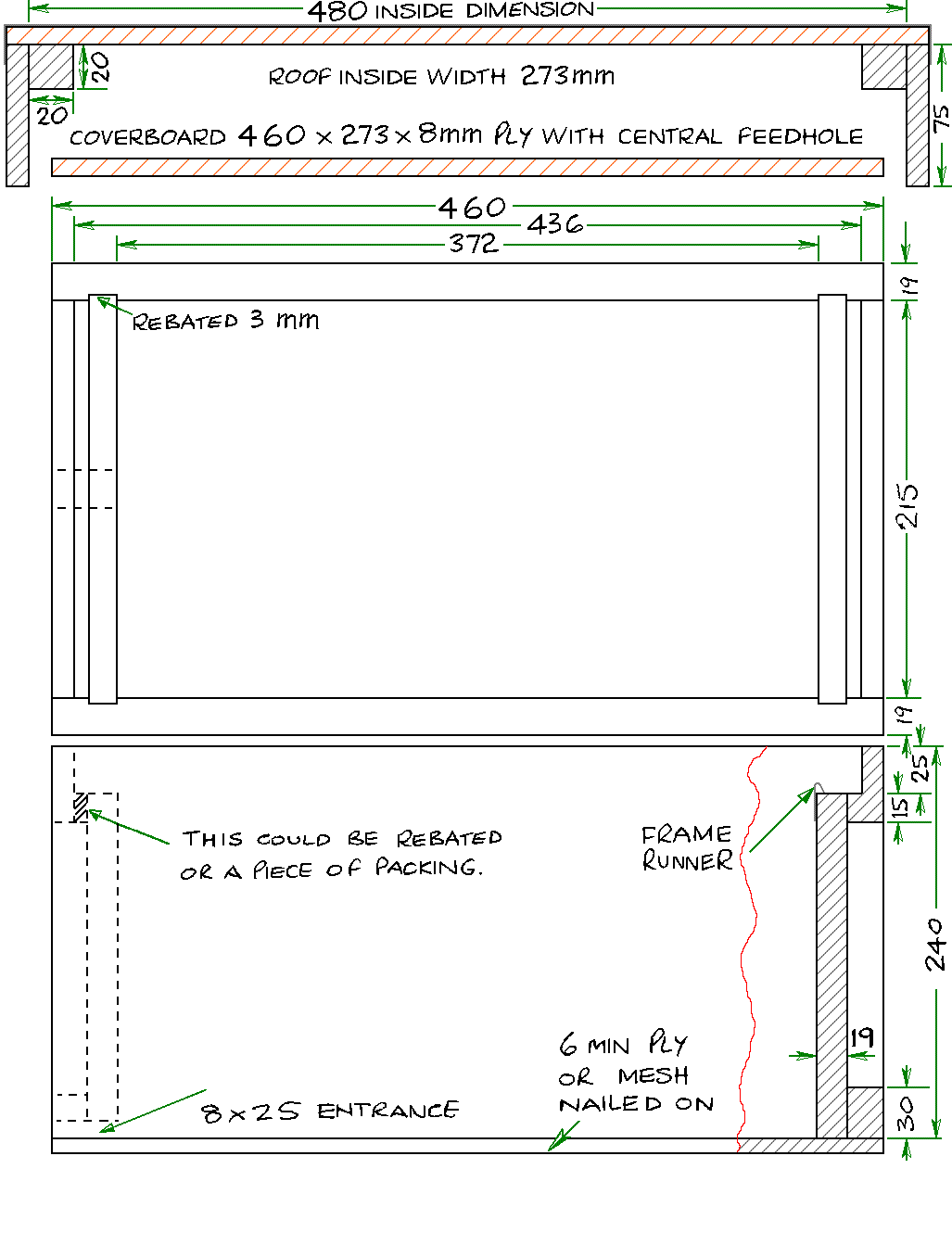Uses of Nuclei
|
|
|---|
|
Uses of Nuclei |
Simple 5 Frame B.S. Nuc Box. Designed by Roger Patterson |
|---|
By comparison with standard national hive parts I believe that wooden nucleus hives sold by equipment suppliers are expensive. I have tried hard to work with poly nucs that are significantly cheaper, but in my opinion there are so many problems with them that a well designed wooden nuc box is a much better option for me.
There are many designs of wooden nuc boxes, but I believe there is one issue that is overlooked by manufacturers. That is the difference in British "narrow" frame spacing between 38mm for most spacers and 35mm for Hoffman self spacing frames. Unfortunately the latter has often been used for standard parts, meaning a 5 frame nuc box is usually 15mm too small when 38mm spacers are used. I designed this box exactly half the internal width of a National brood box, giving room for 5 frames comfortably, plus space to remove a comb without "rolling" bees. A "division" board may be used to prevent the outside comb being extended or wild comb built in the gap.
This nuc box is easy to make with minimal tools and carpentry skills. Mine are made from recycled or discarded materials that a sharp eye will spot, but be careful of anything that will blunt tools such as sand, plaster or nails. If suitable materials are not available a cutting list for a timber merchant can be made. This should take into account standard widths and thicknesses. It is top bee space so a piece of plywood without plinths can be used for a crown board.
For those without the carpentry skills this box can be easily made by making a few adjustments to second quality National brood boxes. All that is needed is to shorten the end boards and modify the top and bottom end rails. A little more modification is required if you want top bee space.
As with making any hive the internal dimensions are critical. The thickness of material doesn't matter much, but the internal dimensions of the roof should be of a size that will fit all boxes for compatibility. There are some dimensions that are missing. This is to allow for whatever material is available or how the beekeeper wishes to make their boxes.
My nuc boxes are made from external grade plywood and softwood. With careful use they will be long lasting and I am successful at over-wintering nucs in them. I also have several without floors that are useful for using as a double nuc.

The Roof is covered with metal. I use old printers litho plates. I think damp proof membrane as used by builders will also be good.
The cover board needs to be at least 8 mm thick in order that it will not sag or warp. The central feed hole can be any size and may be towards one end if you use the tray type feeders.
The sides of the box should be one piece of timber, pine is best, but you may have difficulty finding the 240 mm width that is required. If you use ply for these parts then you should try and use pine for the end boards, as it is easier to drive nails into.If you use mesh for the base, I suggest cutting a hole in plywood and fixing mesh to that, otherwise you will significantly weaken the box. A couple of 20 x 20 cleats underneath to act as legs will provide ventilation through the mesh.
The cross hatched parts indicate sections.
Page created 2008
Page updated 02/06/2019